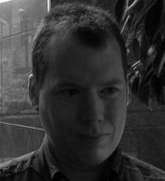Absurd as it sounds, there was a time in the early 20th century when Hansel and Gretel was regularly performed at the Metropolitan Opera on a double bill with Pagliacci. And its longstanding association with Christmas – Richard Strauss, after all, conducted the world première in Weimar on 23 December 1893 – has reinforced a general impression of Engelbert Humperdinck's opera as a light entertainment, a candied appetiser in need of more substantial fare to balance it out if presented as part of a regular opera season intended for adults.
Seattle Opera's current production goes a long way towards correcting this misguidedly superficial assessment. The production marked Laurent Pelly's Glyndebourne debut when it was originally staged there in 2008 and also happened to be Glydebourne's first-ever staging of the opera. General Director Aidan Lang decided to bring the Humperdinck evergreen back to Seattle Opera (after an absence of nearly a quarter-century) in large part thanks to the allure of Pelly's imaginative take, which is receiving its US debut in Seattle (with James Bonas and Christian Räth as the revival directors). It turns out to have been a smart choice... and another clue to Lang's theatrical aesthetic since he's taken over the reins in Seattle.
Unlike productions that attempt to appeal to adults by teasing out psychological tangents – Mother Gertrude and the Witch as alter-egos, sung by the same performer – Pelly's vision mixes whimsy with implicit sociological and political commentary. Hansel and Gretel's family live in a gigantic cardboard box, the forest is a starkly barren landscape of forbidding-looking dead trees, and the magic gingerbread house takes the form of a supermarket wonderland of pre-packaged, corn syrup-drenched merchandise (the marvelously memorable sets and lighting design are the work of Barbara de Limburg and Joël Adam, respectively).
The visuals establish a kind of conceptual breadcrumb trail that traces the fallout of contemporary consumerist society and its effects on the environment and, of course, on ordinary people who have been pushed out of affordable housing. If an operatic fairy-tale frosted with social commentary sounds like the recipe for a nightmare of 'Regie' pretension, not to worry: Pelly's approach not only avoids any hint of annoying preachiness but admirably and artfully layers in generous dollops of touching sentiment and outrageous humour.
Part of the pleasure comes from noticing how Pelly continually calibrates his approach to the straightforward surface of the simple tale. This ranges from an almost tragic naturalism in the first act's final scene to the Witch's over-the-top campiness as her impatience to fatten up little Hansel grows.
The opening night cast brought these varied tangents to life. Sasha Cooke sang Hansel with full, ravishing tone yet at the same time was completely persuasive as a rowdy youngster, full of energy at one moment and protective of his sister the next. Ashley Emerson's sweetly phrased Gretel was well-matched theatrically; musically there were some issues of balance between the different weights of the siblings' voices in the first scene, but these evened out for a radiantly beautiful prayer scene during the second act. Amanda Opuszynski made a strikingly graceful appearance as both the Sandman and the Dew Fairy.
Marcy Stonikas made a strong impression as Gertrude, distilling her character's sense of desperation with focus and reminding us that Humperdinck's Wagnerian influences were by no means restricted to the orchestra. Mark Walters as Peter played up the father's darker side, prone to violence. The role of the Witch, cast as a character tenor and clad in a suit and wig of ghastly pink (the costumes are also designed by Pelly), allowed John Easterlin ample opportunity to mine comic gesture and rhythm. His Mime-like affectations made him weirdly endearing and brought to mind the fairy-tale origins of Siegfried, as well as its scherzoish banter.
A very large part of the success of this staging should be credited to the orchestra and its work with conductor Sebastian Lang-Lessing (making a welcome return after last season's superb Flying Duchman). Too often, Humperdinck is glossed over as 'Wagner-lite', yet Lang-Lessing takes this music seriously on its own terms, with glorious results. The score's beautifully orchestrated textures were allowed to bloom and cast their enthralling spell and, in the final scene, joie de vivre.
Nowhere was Humperdinck's voice more touching than in the dream pantomime of the second act, here accompanied by a characteristically clever Pelly touch: the guardian angels as a choir of TV screens displaying a fast-food glutton's paradise of treats, climaxing in the multiplied image of a Holy Big Mac.




